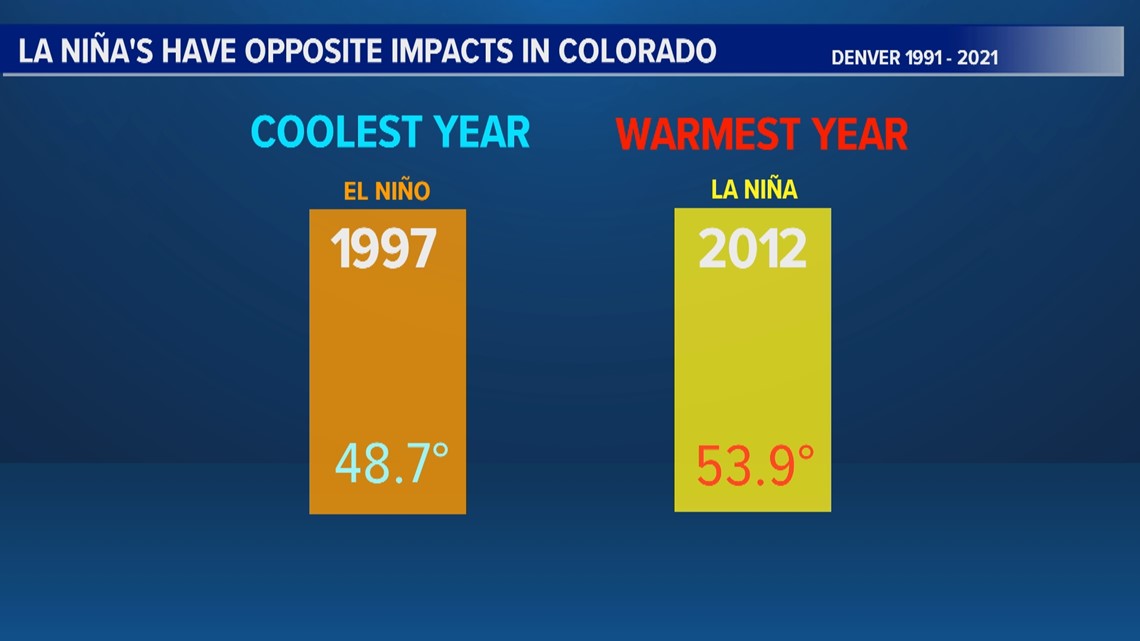DENVER — The La Niña weather pattern starts with cooler-than-normal sea surface temperatures in the Pacific Ocean along the equator. That alters the circulation of air in the atmosphere and generally results in cooler weather across most of the planet.
The coldest years globally, in each of the last seven decades, were all La Niña years, except for the 1990s. That’s most likely because of the Mt. Pinatubo volcanic eruption in 1991 which cooled the planet during the El Nino year of 1992.


So far in the 2020s, there’s only been La Niña patterns. This winter is under the influence of a rare third consecutive La Niña.
2022 is on pace to be a little warmer than last year, but not as warm as 2020. So, for now, the La Niña of 2021 is the coldest year of the 2020s.
But it’s important to note that La Niña's no match for human-caused climate change. 2021 could end up being the coldest year of the 2020s but it was still the 6th warmest in recorded history.
And even the coldest years in each decade have still been getting warmer and warmer.
It's also possible that the La Niña in 2020, prevented that year from being the warmest year in history. Instead, it tied 2016 for the top spot.
In theory, if this climate teleconnection continues to verify, the next El Niño year would break the record for the warmest in history.


Speaking of climate change: if the atmosphere is warming, how did the Pacific Ocean become cooler than average three years in a row?
It’s not air temperature that cools the ocean. It’s mainly caused by stronger than normal easterly winds. That stirs up the ocean and brings the colder water up from the deeper regions. A process called upwelling.
Climate models are showing that those winds may soon start to diminish in strength which means this string of la Nina’s could come to an end sometime early in 2023.
La Niña's in Colorado
La Niña's usually have opposite impacts on the Front Range of Colorado compared to the rest of the globe.
When the atmospheric circulation gets disrupted by a La Niña pattern, there is often sinking air over the southwestern United States which causes high pressure and warmer temperatures.
That impact is more prevalent in southern Colorado but usually impacts the Colorado Front Range as well.
The coldest year in Denver over the past 30 years was the El Niño of 1997. While the warmest year in that span was during the La Niña of 2012.
The three coldest years in Denver history (1912, 1891, 1880) were all before ocean temperatures were recorded, but the 4th coldest year (1983) was during an El Niño.
The warmest year in Denver's history (1934) was also before sea-surface temperatures were tracked. The second warmest year (1981) was during neutral conditions, which means the equatorial Pacific Ocean temperatures were close to average. 2012 was the third warmest in Denver history.


SUGGESTED VIDEOS: Colorado Climate

